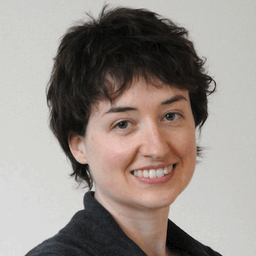
Claire Ainsworth
Freelance Science Journalist at Freelance
Freelance science journalist, DPhil in developmental biology. I write about biology & biomedicine for @NewScientist @Nature @NatureMedicine @bmj_latest & more.
Articles
-
Oct 27, 2024 |
newscientist.com | Claire Ainsworth
Compressing a type of single-celled microorganism makes it develop into a multicellular tissue-like structure with different cell types. This suggests that pressure can help drive key evolutionary leaps, such as the emergence of multicellularity. The organism is a type of archaea, one of the three domains of life, along with bacteria and eukaryotes. The eukaryotes are cells with a nucleus and include animals and plants.
-
Oct 7, 2024 |
newscientist.com | Claire Ainsworth
Shimmering sea creatures called comb jellies have an astonishing ability: if injured, two can merge into one, without showing the kind of tissue rejection reaction seen in other animals. What’s more, the two animals’ nervous systems integrate together and their digestive tracts fuse to share food.
-
Sep 24, 2024 |
newscientist.com | Claire Ainsworth
Ever wished you could hit the pause button on ageing? At least one creature may do just that. Axolotls seem to halt one of the hallmarks of the process part way through their lives, a finding that could shed new light on ageing and regeneration. Axolotls (Ambystoma mexicanum) belong to a group of amphibians called salamanders, which are famed for their astonishing powers of regeneration, such as regrowing amputated limbs. They also appear to age very little, a feature called negligible senescence.
-
Jul 11, 2024 |
nature.com | Claire Ainsworth
Digistain in Milton Keynes, UK, was a finalist in The Spinoff Prize 2024. The company was spun off from Imperial College London in 2019. In the corner of a physics laboratory at Imperial College London sits an unassuming white box not much larger than a kitchen stand mixer. Although its physical footprint is small, its impact on cancer care could be huge.
-
May 9, 2024 |
nature.com | Claire Ainsworth
On a visit to a woman at home in rural Zambia, community-health worker Janet Chisaila unpacks a bag that contains swabs, sample pots and a 3D-printed model of a vagina and cervix. Using the model, Chisaila explains how to use the swabs to take genital samples. The woman then goes to a private area to do her sampling.
Try JournoFinder For Free
Search and contact over 1M+ journalist profiles, browse 100M+ articles, and unlock powerful PR tools.
Start Your 7-Day Free Trial →X (formerly Twitter)
- Followers
- 3K
- Tweets
- 2K
- DMs Open
- No

RT @LindaGGriffith1: Stunning finding: a hormone that dramatically strengthens bones (in mice). Hormone is prominent in lactating mice, bu…

RT @oceancensus: 🧊 The #ArcticDeep researchers are uncovering uncharted hydrothermal vents, hidden over 3.000 meters below the surface. 🚢…

Neglected tropical diseases are heading north into Europe and other non-tropical regions thanks to a combination of climate change, globalisation and other factors that are making these areas more hospitable to disease vectors. My latest for @Nature https://t.co/s90xN2ZL52 https://t.co/bHl7WjBNCn

